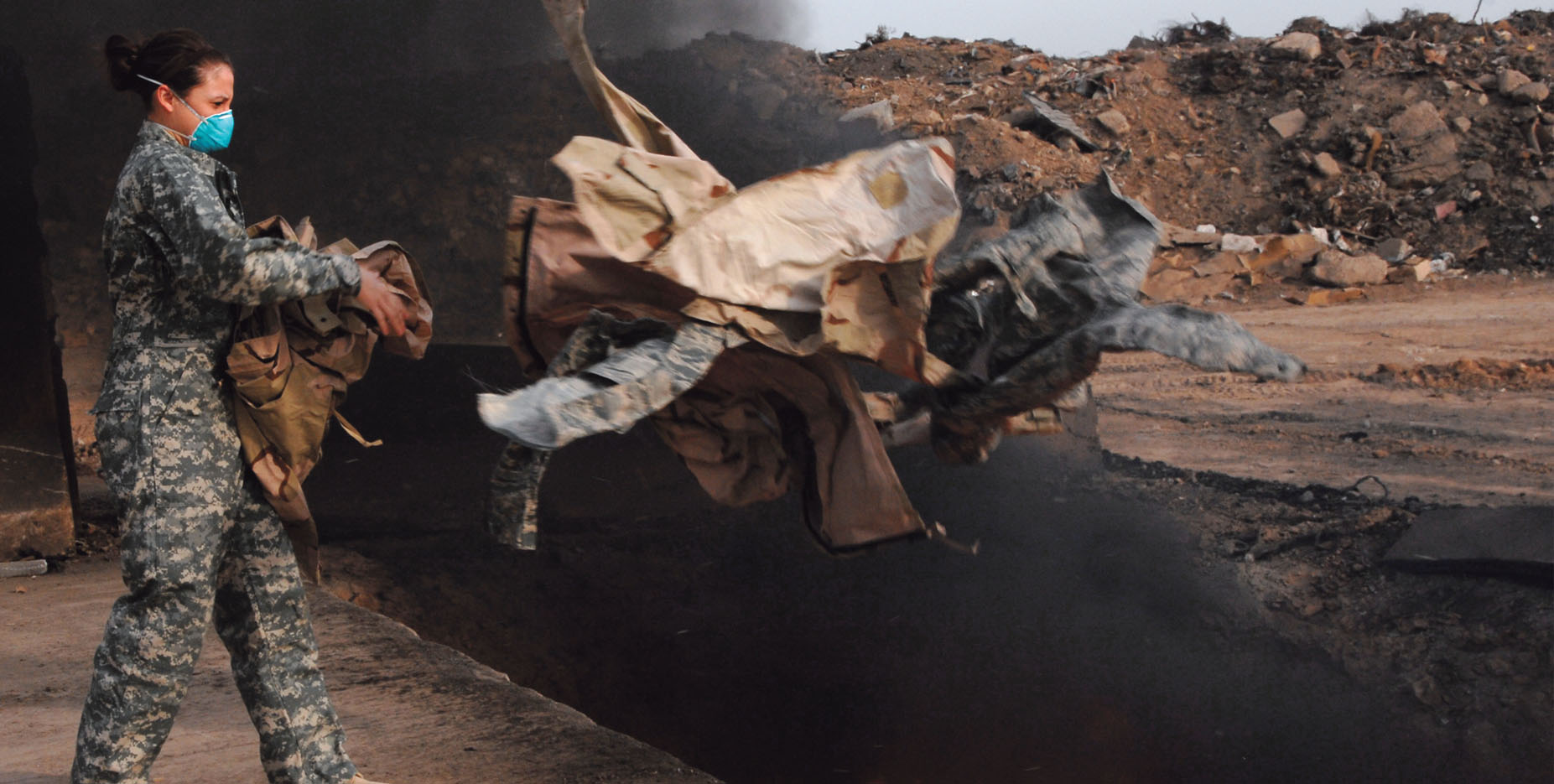
Photos of razed cities turned to rubble circulate widely following airstrikes and artillery fire in a war zone. War devastates both natural and built environments, destroying homes and businesses and affecting air and water quality.
The US-led war in Afghanistan following the 9/11 terrorist attacks lasted 20 years, and the environmental devastation is felt today.
A recently published report by New Lines Magazine highlights how the war in Afghanistan left populations near military bases with long-term adverse health effects, including kidney, heart, and skin issues.
Illegal waste dumping, bombs dropped targeting IS and Taliban militants, and the use of conventional weapons that include carcinogens plagued populations, leaving farms unable to produce crops.
During the war, American military bases in Afghanistan generated huge amounts of waste and were not forced to adhere to local regulations.
Villagers near US and NATO bases reported sewage waste being dumped in front of their houses and into waterways, rubbish burn pits, and major changes to their health after the dropping of “Mother of All Bombs” on an IS hideout in April 2017.
The bombing was hailed by President Donald Trump as “another very, very successful mission,” but locals reported a marked shift in their health afterwards.
The report’s author interviewed locals about their experience working and living alongside the base and how some alerted local authorities to hold the US and allied forces accountable after their water became undrinkable.
The US hired inspectors to ensure compliance with local and US regulations. US Department of Defence regulations prohibit things like open-air burn pits, but they are still widely used due to efficiency and cost concerns.
After being in Afghanistan for three years, proper incinerators were deployed, but contractors often used them incorrectly by adding things that should not have been burned, leading to maintenance issues.
Repair costs were steep, and many bases resorted back to using open-air burn pits.
Military bases with modern weaponry create a substantial amount of waste. In 2011, at the peak of the military presence in Afghanistan, approximately 130,000 troops generated 900,000 pounds of waste daily. Modern weapons contain a host of chemicals harmful to human health, including RDX, a chemical with explosive properties that can adversely affect the human nervous system and is a possible carcinogen.
The US government acknowledged that conditions on bases could create adverse health effects for soldiers and subsequently passed the Pact Act, which offers benefits to veterans who were exposed to burn pits.
The US Department of Veterans Affairs acknowledges that “veterans who served in Afghanistan during Operation Enduring Freedom (OEF) may have been exposed to a range of environmental and chemical hazards that carried potential health risks.”
DoD has faced lawsuits over contaminated drinking water on bases in the US and abroad and has sometimes resisted mandated cleanup orders.
During the two-decade conflict, NATO, and American-allied forces dropped 85,000 bombs on Afghanistan. Similar to the difficulty of attributing a natural disaster directly to climate change, adverse health effects are difficult to attribute to specific causes.
Moreover, Scientific American reports that the US Department of Defence is prohibited from spending funds on environmental remediation in countries where it no longer operates, deeming such matters the responsibility of the host country.
Given that the US has no diplomatic ties with the Taliban and that there is little enforcement of international laws that seek to offer justice to locals for toxic chemical exposure in a warzone, it is unlikely that the Afghans near former bases suffering from rashes, thyroid and kidney issues, and birth defects will receive compensation.
Afghans face myriad hurdles ahead. Two recent earthquakes devastated Zinjadan and Herat, killing over 2,000 people and injuring another 2,000. The country is severely vulnerable to climate change, ranking 174 out of 185 on a climate vulnerability index created by the University of Notre Dame’s Global Adaptation Initiative. And war has again come to the region as the Israel-Palestine conflict grows more brutal by the day.
War exacerbates climate change, increasing pollution, and devastating natural landscapes. Even nations that aim to improve their environmental record and prevent toxic exposure through regulation and outside inspectors often do not meet their goals in a crisis; what is left are devastating health effects and long-term environmental consequences.
Photo: Toxic agents in smoke from the burn pits, such as the one shown in this photo at a US miliary base in Afghanistan, were found at levels sufficient to cause significant adverse health effects. (Credit: Snr Airman Julianne Showalter/US Air Force CC)
Sarah Sakeena Marshall,
American University’s School of Intl Service, The Muslim News Environmental Columnist